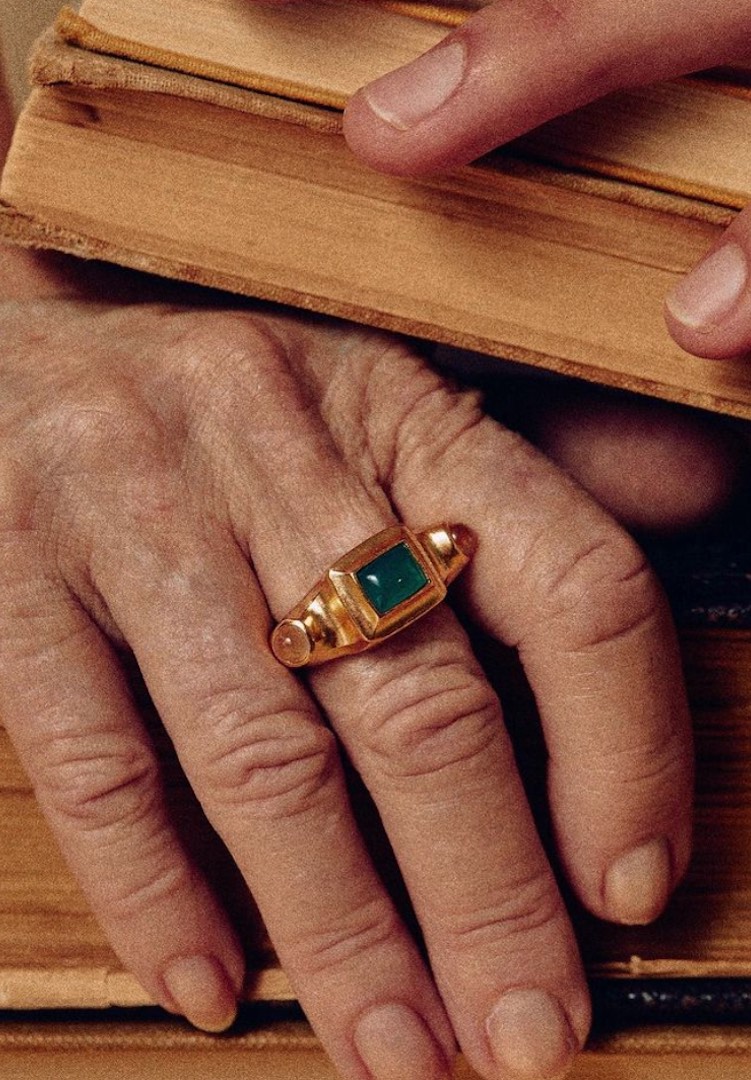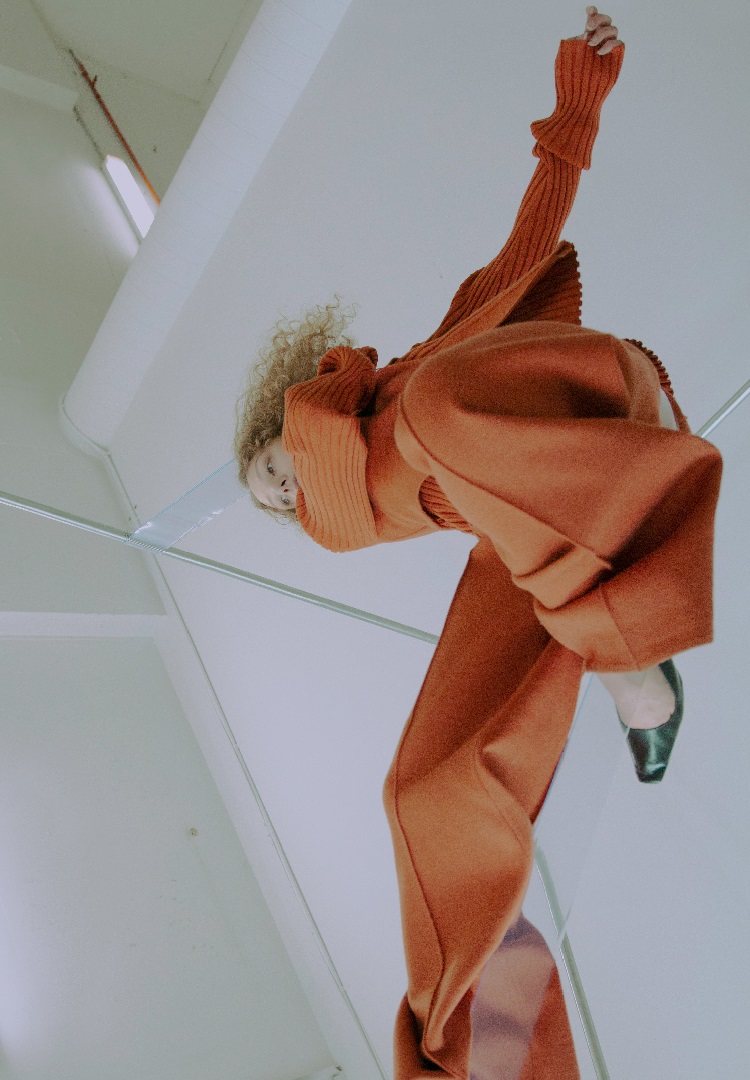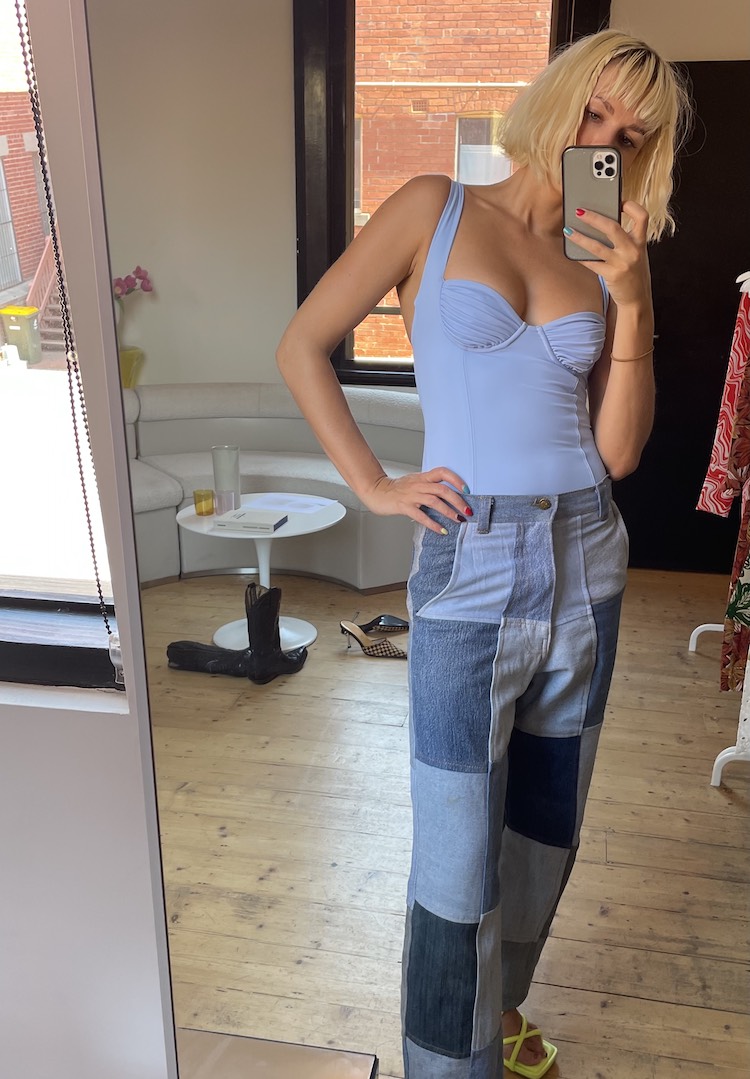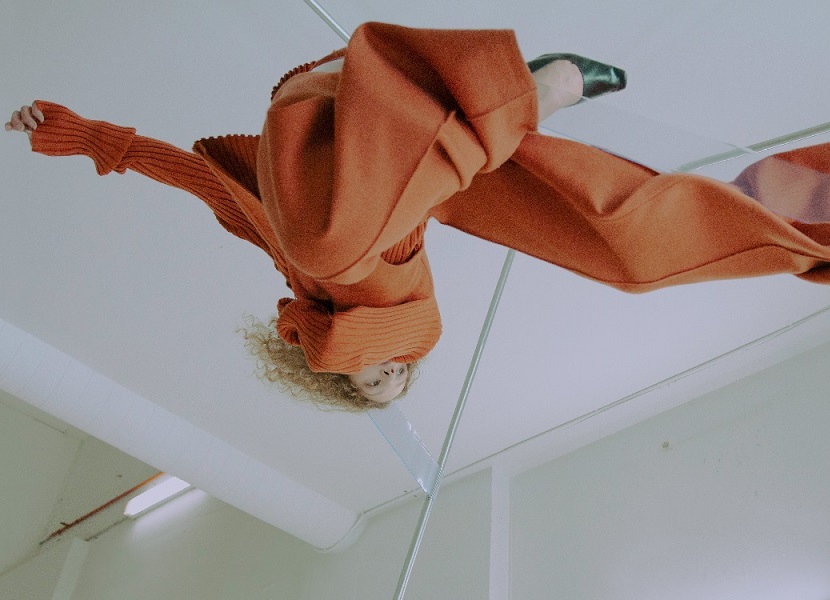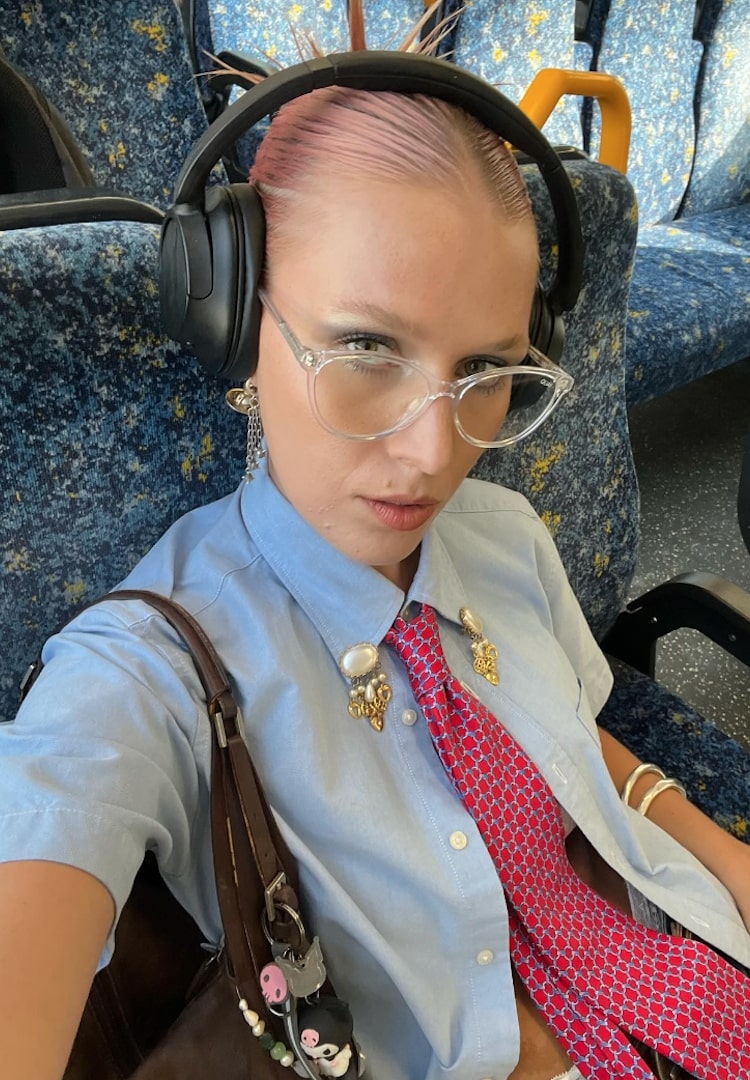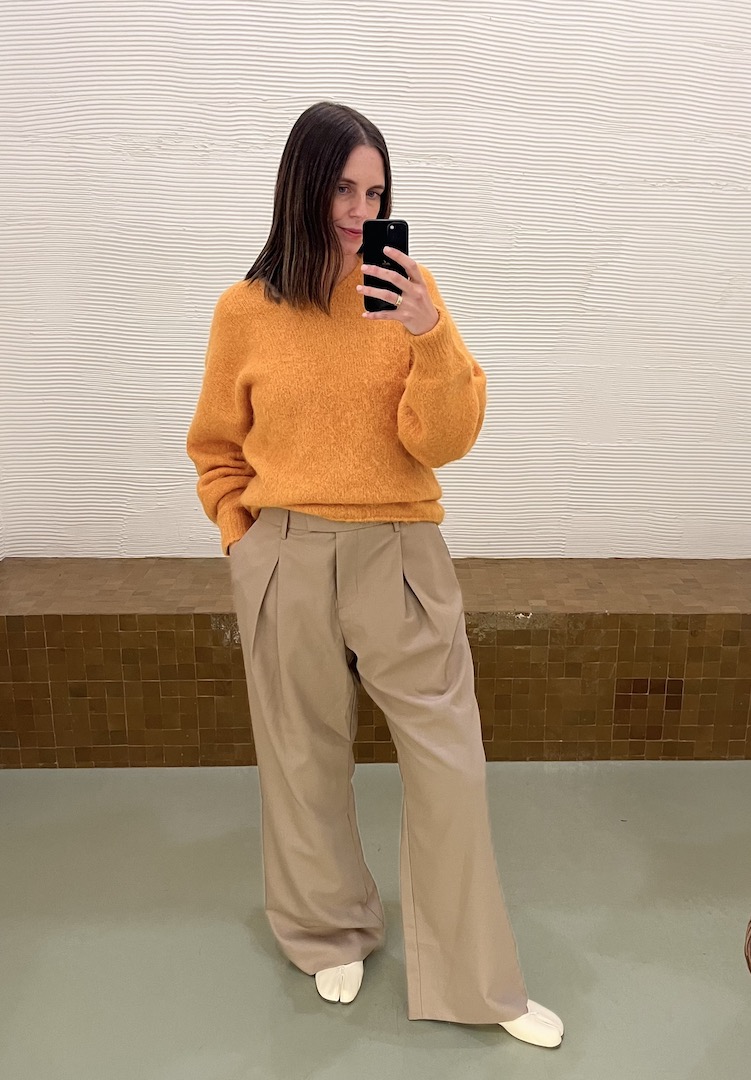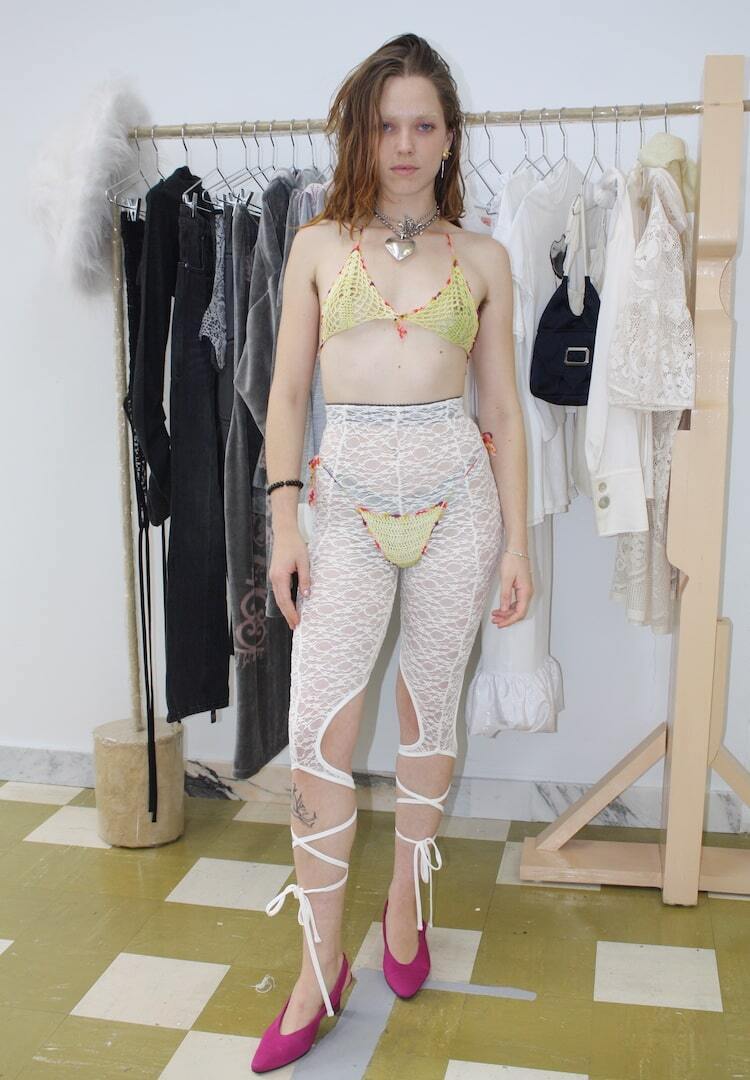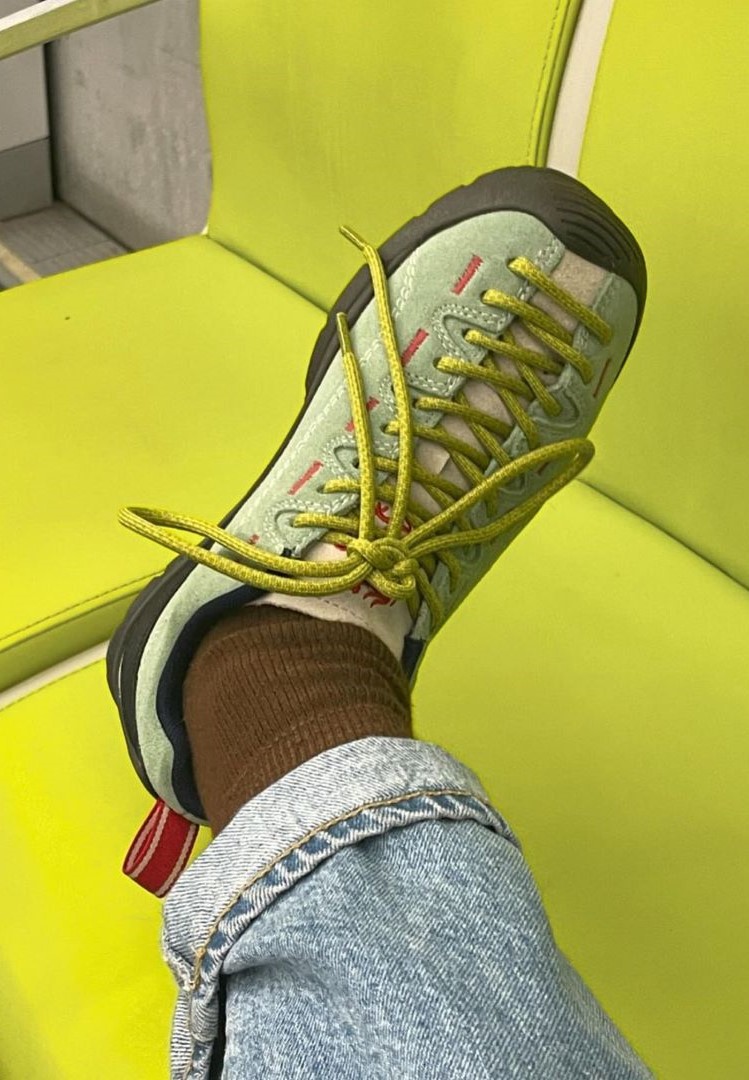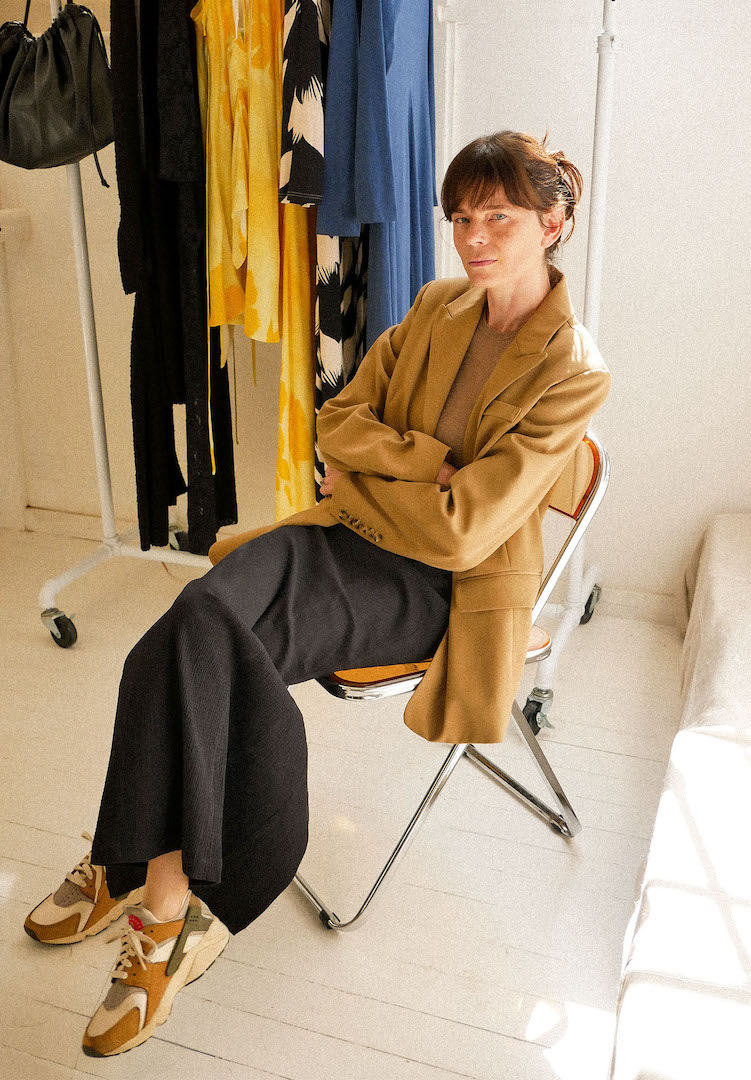Naarm-based designer Laura Galati uses vintage machinery to reinvent knitwear
PHOTOGRAPHY BY LAURA BANFIELD
WORDS BY SOHANI GOONETILLAKE
“I wish I knew that it was okay to start really small. It’s okay to grow organically.”
Knitwear knows no bounds in Naarm-based designer Laura Galati’s creative practice. She seeks to reinvent the winter staple in our wardrobes to be much more than the cosy, oversized outerwear we pull out on chilly Melbourne mornings. Much of her knitwear uses fine gauges to create items like tailored jackets, brassieres, and caps with a sleek finish.
Laura moved into the knitwear realm after working for a few local labels and serendipitously finding vintage, industrial knit machines on Gumtree. After doing some detective work, Laura found that these heavy-duty machines belonged to a woman who ran a Melbourne-based knitwear factory back in the ’60s.
For more fashion news, shoots, articles and features, head to our Fashion section.
Enthralled by her rare find, she taught herself how to use the manual machines as best she could before winning a scholarship to study at the Modateca Deanna in Italy. There, she refined her skillset and learnt how to operate and service her vintage machines. Below, Laura details what it’s like working with vintage machinery and how her small-scale practice has grown organically over time.
Tell us about you. What’s your fashion background?
I studied fashion design at RMIT, worked in the local industry for several years and then in 2019 studied knitwear design at the Modateca Deanna in Italy. I actually graduated just as the pandemic happened.
I came home in March 2020 thinking I’d be returning to Italy a few months later, but that wasn’t to be. One thing the pandemic has taught me is that you can’t plan your life too much. Since I’ve been home, it’s been really nice to reconnect with the local fashion community.
View this post on Instagram
Tell us about the vintage machines you acquired.
These machines are so rare, it was the first time I’d seen them in Melbourne and then I remember going to Italy and there were 50 of these machines in a room! Some of the machinery is so old so there are no technicians or anyone that could do maintenance for me so I had to learn how to maintain these machines.
When I was in Italy, I was working with one of the technicians there and I was just like teach me, teach me how to service this machine! What oils do I need to use? Because I had no one who could show me how.
View this post on Instagram
How did the label get started?
At the beginning, I was wanting a creative outlet that was different to freelance projects. Because I have this machinery in my studio, I started making custom pieces for family and friends and it sort of just grew organically as a side project. I had a lot of interest from people [about] the pieces that I’m creating and how I’m creating them which is really nice.
View this post on Instagram
It’s been wonderful to see more people valuing craftsmanship and the time that goes into making. I think social media has been really good for this. I always receive really great responses when I give insights into my making processes. I think people are actually really interested in this, but you just have to show them!
View this post on Instagram
What do you wish you knew when you started?
I feel like I’m still at the beginning but I wish I knew that it was okay to start really small. It’s okay to grow organically, I think sometimes you align yourself with designers or competitors but then it’s easy to forget that they might seem quite small-scale but there’s actually a team of people behind them or an investor or things like that.
What are the pros and cons of working with vintage machines?
Having this machinery is amazing and it’s also allowed me to maintain a lot of the skills that have been lost because a lot of the machinery today is electronic and things are programmed. The cost of prototyping with electronic machinery can often be very expensive and I feel like what I’m doing is a lot more bespoke and it takes a long time to craft these pieces.
View this post on Instagram
It can be difficult, there are some things that these machines can’t do that electronic machines can, so it can often be limiting but they are parameters that make you more creative in a way. I feel it’s one aspect of my craft but I’m not limiting it to this and I will have parts of my brand that will be made by manufacturers as well. It’s nice to incorporate old and new tech.
Which item are you most proud of in your label?
I’ve worked on a collection of tailored suits which were completely knitted. I was really proud of this because it was quite a feat to achieve this technically while still maintaining the inherent qualities of the materials.
View this post on Instagram
What do you think is most exciting in Australian fashion right now?
I’m a big fan of labels keeping their production in-house or at least keeping local manufacturing alive. I’m seeing quite exciting things from brands like Jordan Dalah in Sydney. I also am a big fan of Lambert who prioritises sustainable manufacturing processes like recycling consumer textiles [and] digital prototyping. I think that’s a great direction for the industry.
How can we buy one of your pieces?
At the moment, contacting me directly through email or Instagram. I am currently working on a capsule collection that will launch towards the end of the year.
To see more from Laura Galati, head here.

